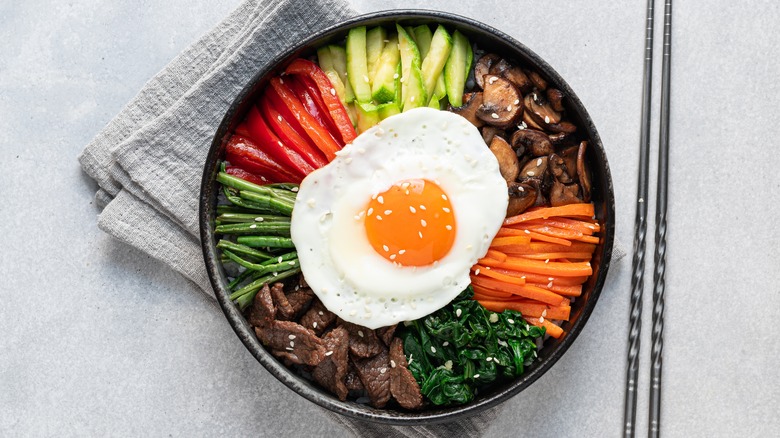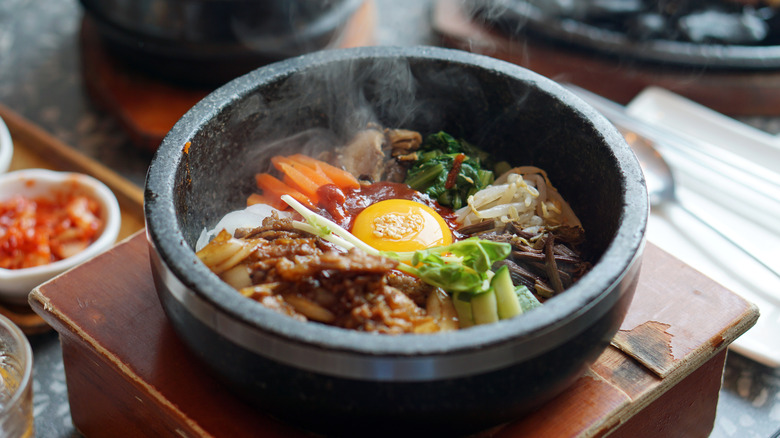How To Cook The Egg For Your Bibimbap Topping
You're in the kitchen ready to make bibimbap and the recipe presents you with a delicious dilemma: How will you crown your bibimbap? Will you make it with a fried sunny-side up egg or mix a raw egg directly into the rice? Bibimbap, a beloved Korean staple, presents a comforting bowl of steamed rice, vibrant with an array of sauteed vegetables like spinach, zucchini, and carrots, often accompanied by your choice of protein. The final crowning touch is usually an egg.
A sunny-side up egg is the classic way to enhance bibimbap made in a regular bowl. To make one, fry the egg in oil but keep the yolk intact and unturned. You want fully set whites that are also crispy, and a runny, golden center. The warm, runny yolk spills over the other ingredients atop your bibimbap, acting like a velvety sauce. Garnish the fried egg with sesame seeds, let the yolk do its thing, and mix everything with a spicy-sweet bibimbap sauce. On the other hand, if you enjoy bibimbap in a hot dolsot (or stone pot), we recommend cracking open a raw egg instead.
Egg-ceptional choices for your bibimbap, fried egg or raw
Dolsot bibimbap is served in a sizzling hot stone pot, which keeps the rice and other ingredients warm. The dolsot also crisps the rice at the bottom, adding a delightful crunch. When you crack a fresh, raw egg over the hot ingredients in the dolsot, it begins to cook from the residual heat but largely retains its rawness. The egg continues to gently cook as you stir it with the other ingredients, binding the rice, vegetables, and other components into a harmonious blend. The raw egg also adds a smooth, silky texture that contrasts beautifully with the crispy rice.
Ultimately, how you decide to cook the egg for your bibimbap topping is up to you. Each choice, whether a fried egg in a regular bowl or a raw egg in a dolsot, reflects the versatility and adaptability of bibimbap. An ingredient as simple as the humble egg can transform the dish. So next time you're faced with this delicious dilemma, whether at home or in a restaurant, remember this: For a classic bibimbap, go for the fried egg; for dolsot bibimbap, embrace the raw egg. Of course, you can also experiment and try them vice versa. Whichever you choose, you're bound to enjoy this delightful Korean staple.

